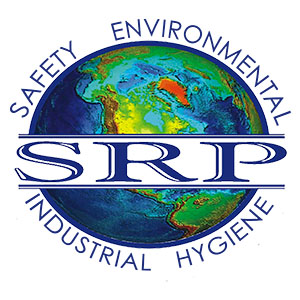About Spill Prevention, Control, and Countermeasures Compliance
The US Environmental Protection Agency (EPA) requires all owners and operators of facilities that have above ground bulk storage tanks of oil of more than 1,320 gallons in one area or operate underground bulk storage tanks of 42,000 gallons or greater of oil be subject to the Oil Pollution Program under the Clean Water Act of 1972 in 40 Code of Federal Regulations (CFR) 112. Compliance under this regulation is achieved through design and implementation of a current Spill Prevention Control and Countermeasures (SPCC) plan certified within the last five years. SRP Environmental provides SPCC plan preparation and certification by a licensed Professional Engineer in the state where the facility operates. SRP also provides employee training related to site implementation of the SPCC plan. (Some state requirements have lower quantity thresholds and may include hazardous chemicals.)
Unlike oil spill contingency plans that typically address spill cleanup measures after a spill has occurred, SPCC plans ensure that facilities put in place containment and other countermeasures that would prevent oil spills that could reach navigable waters. Under EPA’s Oil Pollution Prevention regulation, facilities must detail and implement spill prevention and control measures in their SPCC Plans. A spill contingency plan is required as part of the SPCC Plan if a facility is unable to provide secondary containment (e.g., berms surrounding the oil storage tank). In short, the plan must describe how you intend to operate your facility to prevent spills and what you will do to deal with them if they occur.
Does Your Facility Need A Spill Control & Countermeasures Plan?
In 1973, EPA issued the Oil Pollution Prevention Regulation, which is codified in 40 CFR Part 112, to address the oil spill prevention provisions contained in the Clean Water Act of 1972. The regulation forms the basis of EPA’s oil spill prevention, control, and countermeasures, or SPCC, program, which seeks to prevent oil spills from certain aboveground and underground storage tanks. In particular, the regulation applies to non-transportation-related facilities that:
-
Have an aggregate storage capacity greater than 1,320 gallons or a completely buried storage capacity greater than 42,000 gallons; and could reasonably be expected to discharge oil or hazardous chemicals in harmful quantities into navigable waters of the United States.
-
The regulation requires each owner or operator of a regulated facility to prepare an SPCC Plan. The Plan is required to address the facility’s design, operation, and maintenance procedures established to prevent spills from occurring, as well as countermeasures to control, contain, clean up, and mitigate the effects of an oil spill that could affect navigable waters.
What Does the SPCC Plan Include?
Each SPCC Plan must be specific to the facility. Development of a unique SPCC Plan requires detailed knowledge of the facility and the potential effects of any oil spill. Each SPCC plan, while unique to the facility it covers must include certain standard elements to ensure compliance with the regulations. An SPCC Plan should include the following information and should follow the sequence outlined below:
· A facility which has experienced one or more spill events within twelve months prior to the effective date of this part should include a written description of each such spill, corrective action taken, and plans for preventing recurrence (40 CFR 112.7(a)).
· A prediction of the direction, rate of flow, and total quantity of oil that could be discharged where experience indicates a potential for equipment failure.
· A description of containment and/or diversionary structures or equipment to prevent discharged oil from reaching navigable waters. (For on-shore facilities, one of the following should be used as a minimum: dikes, berms, or retaining walls; curbing; culverts, gutters, or other drainage systems; weirs, booms, or other barriers; spill diversion ponds; retention ponds; sorbent materials.) Where appropriate, a demonstration that containment and/or diversionary structures or equipment are not practical and a strong oil spill contingency plan and a written commitment of manpower, equipment, and materials to quickly control and remove spilled oil.
· A complete discussion of the spill prevention and control measures applicable to the facility and/or its operations.
SRP Environmental can provide the following services:
-
Development of an SPCC plan
-
Site audit
-
Review of facility records
-
Review of regulatory records
-
SPCC Training
-
Certification of plan by registered Professional Engineer
-
SPCC Modifications & Updates
For additional information on the Spill Prevention Control and Countermeasure (SPCC) Rule visit the United States Environmental Protection Agency’s Oil Program webpage
References:
U.S. Environmental Protection Agency, Spill Prevention Control and Countermeasure, U.S. EPA Oil Program, Last ammended 2011, United States Environmental Protection Agency,
U.S. Environmental Protection Agency, Required Elements of Spill Prevention Control and Countermeasures Plans, U.S. EPA Oil Program, Last ammended 2011, United States Environmental Protection Agency,
U.S. Environmental Protection Agency, Oil Pollution Prevention Regulation Overview, U.S. EPA Oil Program, Last ammended 2011, United States Environmental Protection Agency,

 ">
">
 ">
">